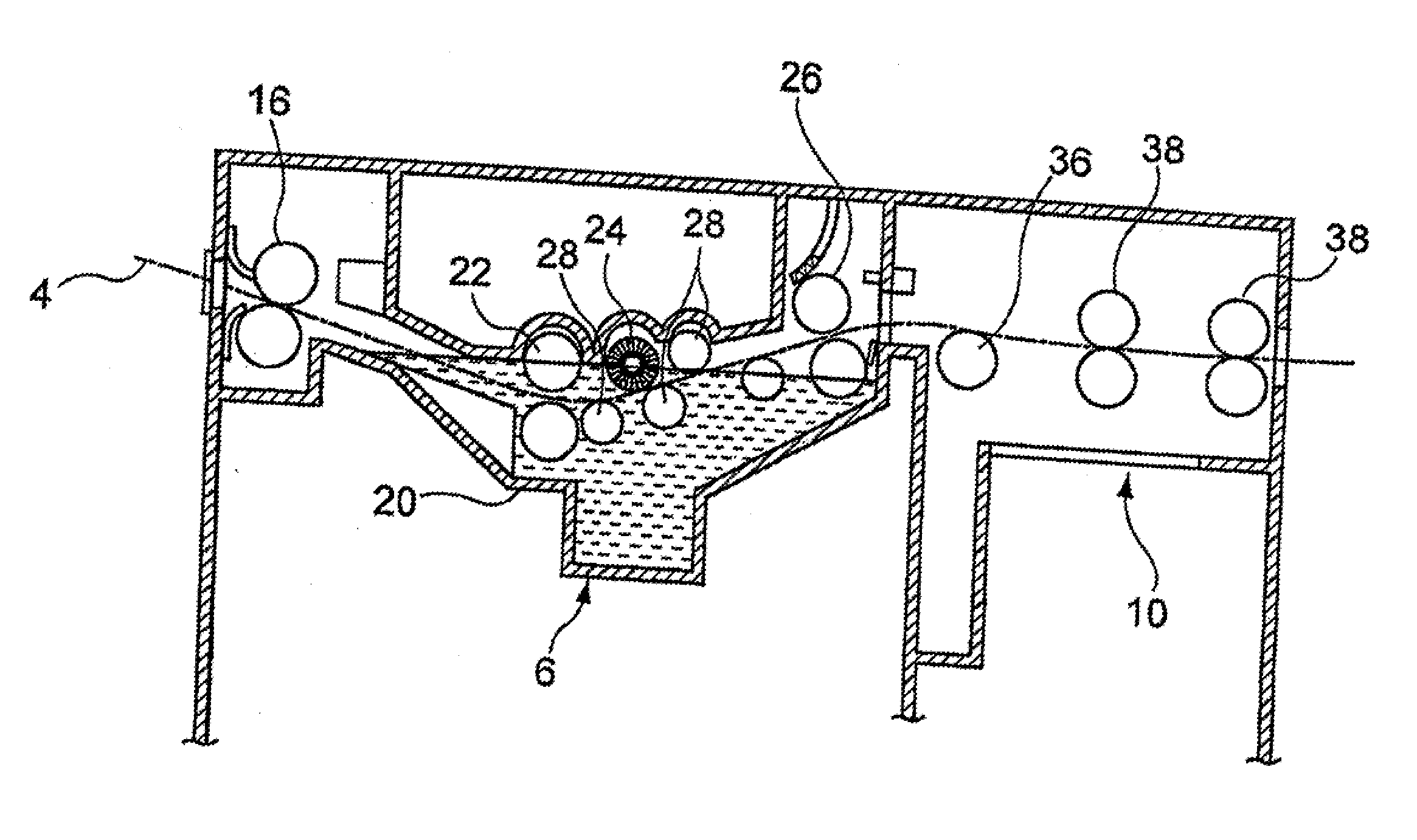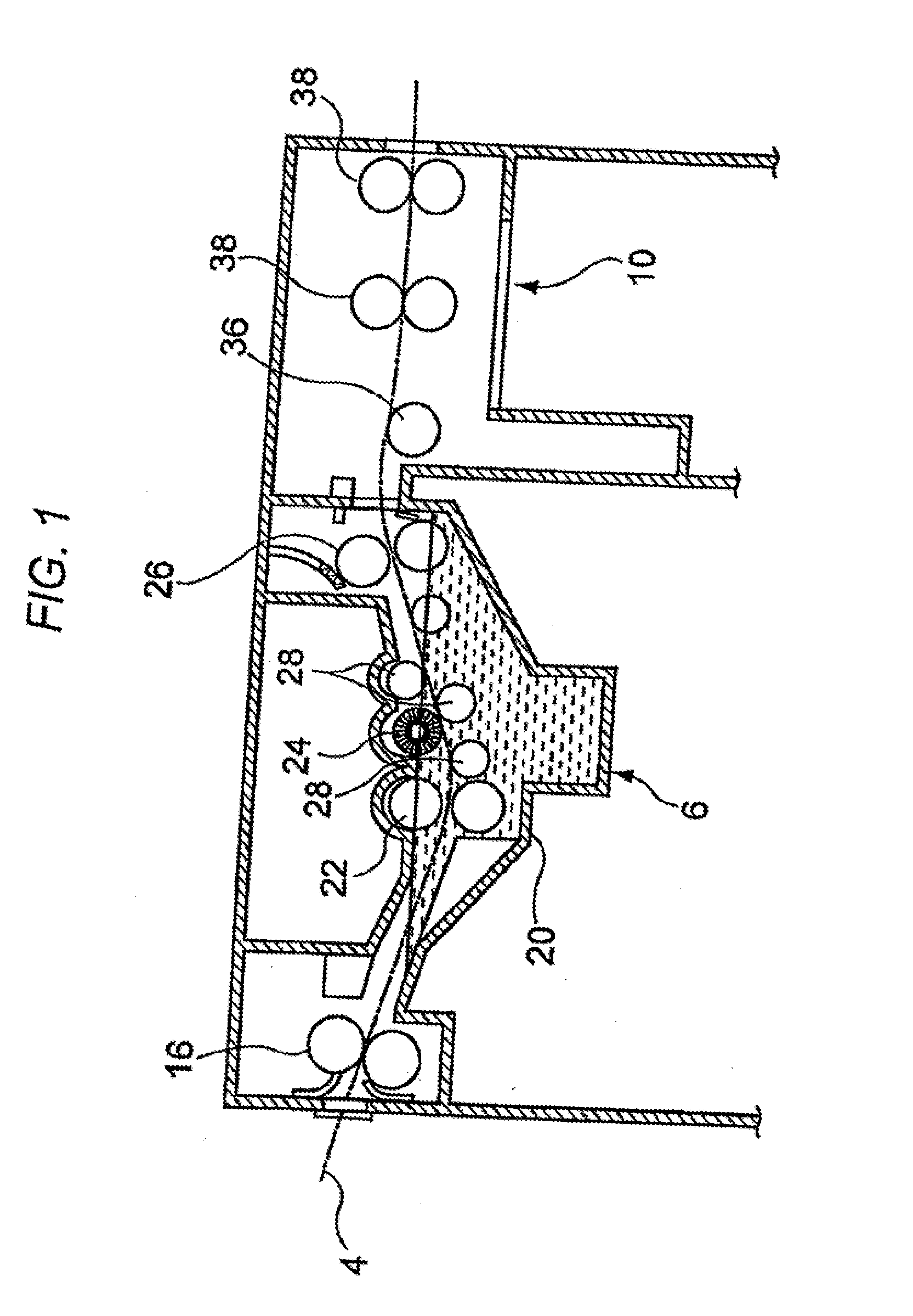Lithographic printing plate precursor, plate making method thereof and novel polymer compound
a lithographic printing plate and precursor technology, applied in the field of lithographic printing plate precursors, can solve the problems of insufficient stain resistance of the lithographic printing plate prepared, difficult to achieve a good compatibility between printing durability and printing stain, etc., and achieve high hydrophilicity, strong adhesion property, and high hydrophilicity
- Summary
- Abstract
- Description
- Claims
- Application Information
AI Technical Summary
Benefits of technology
Problems solved by technology
Method used
Image
Examples
synthesis example 1
Synthesis of Specific Polymer Compound (1)
(1) Synthesis of N-aminoethylmethacrylamide
[0296]In a mixture of 100 ml of methanol and 96 g of distilled water was dissolved 24.04 g (0.4 mol) of ethylenediamine and to the solution was added 104 g (0.52 mmol) of 5.0 NI hydrochloric acid while cooling with ice. To the mixture was dropwise added 61.65 g of methacrylic anhydride while maintaining at −10° C. and after the completion of the dropwise addition, the mixture was stirred at −10° C. for 2 hours. Then, 400 ml of ethyl acetate was added to the mixture to conduct extraction and the aqueous layer was collected. To the aqueous layer was added 21 g (0.52 mol) of sodium hydroxide, the white crystals deposited were removed by filtration, and extraction treatment was conducted with 400 ml of acetonitrile. The acetonitrile solution was dried on 40 g of magnesium sulfate for 2 hours and the acetonitrile was distilled off to obtain 14.4 g (yield: 28%) of N-aminoethylmethacrylamide.
(2) Separatory...
synthesis example 2
Synthesis of Specific Polymer Compound (33)
[0300](1) Synthesis of 4-sulfonatobutyl[3-(methaeryloylamino)propyl]dimethylammonium
[0301]In 380 ml of acetonitrile were dissolved 130 g (0.764 mol) of N-[3-(dimethylamino)propyl]methacrylamide, 104 g of butanesultone and 234 mg of 4-hydroxy-2,2,6,6-tetramethylpiperidinoxy and the solution was heated at 70° C. for 6 hours. After allowing to cooling, to the reaction mixture were added 1,350 ml of acetone and 150 ml of methanol and the mixture was stirred at room temperature for one hour. The crystals deposited were collected by filtration and thoroughly washed with acetone to obtain 200.0 g (yield: 85%) of 4-sulfonatobutyl[3-(methacryloylamino)propyl]dimethylammonium.
(2) Polymerization Step
[0302]To a 200 ml flask equipped with a condenser and a stirrer was charged 40.85 g of distilled water and heated to 55° C. under nitrogen stream. A solution composed of 1.07 g of N-aminoethylmethacrylamide synthesized above, 29.92 g of the aqueous solutio...
synthesis example 3
Synthesis of Specific Polymer Compound (84)
[0304](1) Synthesis of N-(2-aminoethyl)methacrylamide monophosphate
[0305]To a 2 liter 3-necked flask were charged 27.0 g of ethylenediamine (produced by Wako Pure Chemical Industries, Ltd.), 225 g of ion-exchanged water and 225 g of methanol and the mixture was cooled to inner temperature of 5′C. To the mixture was added 114.3 g of benzoic acid (produced by Wako Pure Chemical Industries, Ltd.) and 118.08 g of methacrylic anhydride (produced by Sigma-Aldrich Corp.) was dropwise added thereto over a period of one hour while maintaining the inner temperature at 5° C. or lower. After the completion of the dropwise addition, the mixture was stirred for 3 hours while maintaining the inner temperature at 5° C. or lower, returned to room temperature and an aqueous 85% by weight phosphoric acid solution (produced by Wako Pure Chemical Industries, Ltd.) was added thereto to adjust pH of the reaction solution to 3.0.
[0306]To the reaction solution were...
PUM
| Property | Measurement | Unit |
|---|---|---|
| pH | aaaaa | aaaaa |
| wavelength range | aaaaa | aaaaa |
| wavelength range | aaaaa | aaaaa |
Abstract
Description
Claims
Application Information
 Login to View More
Login to View More - R&D
- Intellectual Property
- Life Sciences
- Materials
- Tech Scout
- Unparalleled Data Quality
- Higher Quality Content
- 60% Fewer Hallucinations
Browse by: Latest US Patents, China's latest patents, Technical Efficacy Thesaurus, Application Domain, Technology Topic, Popular Technical Reports.
© 2025 PatSnap. All rights reserved.Legal|Privacy policy|Modern Slavery Act Transparency Statement|Sitemap|About US| Contact US: help@patsnap.com



